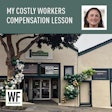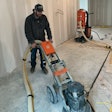

"We are anticipating weak growth in 2012, with a gross domestic product (GDP) increase of some 2.7 percent," says Sophia Koropeckyj, managing director of industry economics at Moody's Analytics, a research firm based in West Chester, Pa. GDP represents economic activity, or the annual total of all goods and services produced in the United States.
At first glance a 2.7 percent rise in GDP might seem pretty good, given that the annual rate for an economy in average growth mode is 2.5 percent. Yet Moody's forecast can be misleading because it is calculated off a poorly performing 2011 in which growth only stumbled forward at an estimated 1.6 percent. Koropeckyj cautions that her firm's forecast could be too optimistic: "While we are still expecting a recovery in 2012, we now believe there is a 50-50 chance of lapsing into a double-dip recession during the first half of the year."
Consumers Hold Back
Moody's ambiguous forecast reflects the uncertainty prevalent everywhere in the economic environment. Both players on the marketing seesaw are taking breathers: Consumers are waiting for a decline in the unemployment rate and a bottoming out of the housing market before opening their wallets in appreciable numbers, and corporations are awaiting a rebound in consumer activity before bolstering work forces and investing in new property and equipment.
"Unemployment remains high and wage growth is very slow even for people who do have jobs," points out Koropeckyj. "As a result, consumer spending has not been as strong as it could be."
And will the jobs picture improve? "The expected economic growth in 2012 is at a level which can absorb some unemployed people, but not too many," says Koropeckyj. "So by the end of 2012 we are expecting the unemployment rate to be around 8.8 percent, not appreciably lower than the 9.1 percent level of late 2011."
Any improvement in the jobs picture will depend largely on policy decisions at the federal level, according to Scott Hoyt, Moody's senior director of consumer economics. "Under current law, we will experience significant fiscal restraint next year, with the expiration of both the payroll tax holiday and extended unemployment benefits. Those are the two factors that most directly impact consumers."
As for housing, consumers are wary of the continuing rounds of foreclosures and the high number of homes worth less than their mortgages. "Foreclosures and housing inventory remain quite high, maintaining downward pressure on home prices," says Koropeckyj. "We do not anticipate house prices hitting bottom until the end of 2012." The median price for existing home sales is expected to be $166,000 in 2012, about even with the $165,000 expected for 2011, which represented a decline from the $173,000 of 2010.
Housing starts may hit a little over 1 million in 2012, which sounds good until we put it in perspective: housing starts were averaging 1.6 million annually before the current recession that began in 2008.
Perhaps the most powerful force affecting the economy is psychological: People believe they are at the end of an era in which they could view their homes as sources of equity and as assets that would continually increase in value.
Businesses Sit It Out
Until consumers come out of their funk, corporations will be in no hurry to hire and expand. They are also being restrained by uncertainty about federal initiatives in areas such as the tax code, health care and financial reform, environmental and energy policy, foreign trade, and even the upcoming presidential election.
The fact is that most large- and medium-sized businesses would rather accumulate cash than launch initiatives that might not pay off in a wobbly marketplace.
And there is enough anecdotal evidence about demand being choppy that business owners are not thinking about what they should do to improve their operations, says Walter Simson, principal of Chatham, N.J.-based Ventor Consulting. As a result, Moody's expects spending on new plants and equipment to increase by 7.06 percent in 2012, down from the 9.61 percent of the previous year.
Paradoxically, hesitation to expand comes at a time when credit for medium- and large-sized businesses is more readily available than a year ago.
Smaller businesses, however, face continuing hurdles. "Our small businesses are continuing to find it difficult to find reasonable capital," says Michael Smeltzer, director of the Manufacturers Association of South Central Pennsylvania, a trade group whose 1,000 members employ some 200,000 workers. "The general machine shop-the small guy living week to week-that is where the problem is. And that's where the jobs are created; that's where the new ideas and the entrepreneurs start."
The Labor Mismatch
Deciding to hire more people is one thing; finding the right people is another. And in this area the labor market will present a growing challenge to both consumers and businesses. "We are beginning to be concerned about what may be a chronic labor shortage," says Smeltzer. "The workforce is getting older, and our data tell us that as many as 5 percent of our employees could retire every year. That's 10,000 people [out of 200,000 employees in the organization's member companies] with a high-quality work ethic and legitimate skills."
And who will replace them? Despite high unemployment figures, business owners are having trouble finding the workers they need. "Young people are not being trained in these skills, and a lot of the unemployed do not have the skills our businesses are looking for," says Smeltzer.
Poised For a Rebound
Despite the prevalent gloom and doom, the news isn't all bad. "Households have been de-leveraging, so their balance sheets are in much better shape," says Koropeckyj. "Mortgage rates are quite low and banks are more willing to make consumer loans. There are more credit card originations and there is also a lot of pent-up demand." Indeed, Moody's expects a gradual loosening of credit standards to continue through 2012.
In the meantime, small business owners are taking a "wait and see" attitude about the future. Until certainty returns to the marketplace, business owners will be wringing more revenues out of current operations, trimming operational expenses, and putting expensive expansion initiatives on hold. So, build on what you have, growing sales with existing customers. Maybe that's a dull strategy, but it might be the wisest course until the economic headwinds subside.

































